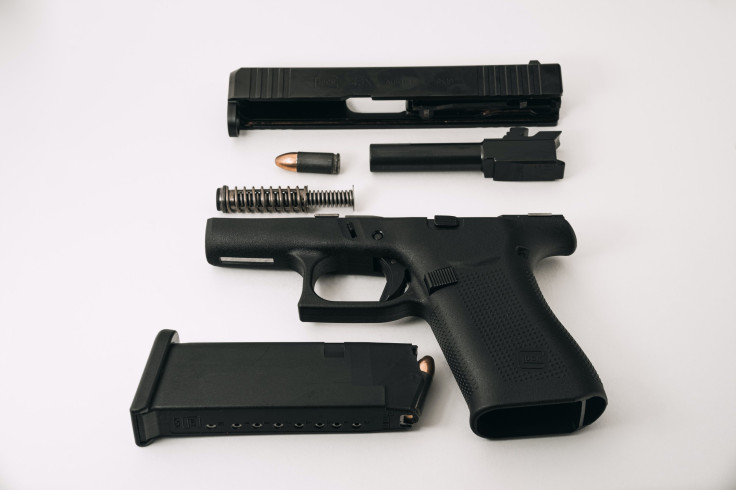
The June 7 assassination attempt on Colombian Senator and presidential hopeful Miguel Uribe Turbay sent shockwaves through the South American country. Soon after, disturbing details began to emerge, from the age of the teenage shooter to alleged prior requests to bolster the politician's protection unit.
Another detail was one that didn't come as a surprise for many Latin American observers: the gun that left Uribe fighting for his life was purchased legally in the United States.
The pistol, a 9mm Glock, was bought in August 2020 at a gun store in Arizona. The weapon's origin illustrates how the legal U.S. gun market continues to fuel criminal violence across the Americas – not only in Mexico and the Caribbean but further south too.
For years, Mexico has grappled with violent crime that many observers say is partially enabled by the flow of arms across its northern border. The Mexican government claims that up to 90% of arms recovered at crime scenes in the country can be traced to the United States, while Washington's Bureau of Alcohol, Tobacco and Firearms (ATF) estimates the figure to be at 68%.
In the Caribbean, home to hotspots like Haiti, Jamaica, and Trinidad and Tobago, the United States Government Accountability Office recently reported 73% of traced firearms were of U.S. origin.
"There is no chance you can explain violence [in the Americas] without understanding the trafficking of firearms from the United States," said Carlos Pérez Ricart, a professor at the Center for Research and Teaching in Economics in Mexico City and author of an upcoming book on U.S. guns driving violence in Latin America.
While Mexico and the Caribbean have long been affected, Colombia is now facing a similar challenge.
Sources from Colombia's National Police told The Latin Times that forces seized some 18,000 firearms between 2024 and 2025, 21% of which were manufactured in the United States.
But police said they do not collect data on where illegal firearms were purchased, which is more complex to track.
For example, Glock – which made the 9mm pistol used against Uribe and also happens to be the U.S.-purchased gun most commonly used in international crimes – manufactures most of its firearms in Austria, where the company is based. While some of its weapons sold in the U.S. are made in the State of Georgia, most are imported from Europe.
Because guns are often manufactured in one country and sold in another, simply tracking where a firearm was produced likely underestimates the true number of U.S.-sourced guns. According to Pérez, the actual proportion of guns entering Colombia from the United States is likely between 50 and 60 per cent.
The academic went on to criticize U.S. gun manufacturers and sellers for their role in regional violence.
"They know that these weapons are going to kill people... they earn the money, they take the money, but the people who die are located south of the border," said the professor.
The southward flow of U.S. firearms appears to be on the rise, according to a recent report by the Small Arms Survey (SAS), a Swiss-based research project.
The entity registered a "notable increase" in seizures of arms shipments by U.S. customs authorities, with those bound for Mexico more than tripling between 2016 and 2023. Intercepted shipments destined for the Caribbean rose by 48% while the rest of Latin America, which includes Colombia, saw a 16% rise.
The Colombian National Police said it seized 19% more American-made arms in the first five months of 2025 than in the same period last year. The increase in U.S.-purchased arms cannot be determined due to lack of data.
The police added that many guns enter the country directly from the United States disguised among legal goods on container ships. But they also highlighted the use of 'go-fast' speedboats to transport arms from Central America to Colombia's Pacific and Caribbean coasts.
Established links between Mexican cartels and Colombian criminal organizations create additional channels for U.S. guns to move from Mexico to Colombia. There are reports that guerrilla groups like the National Liberation Army (ELN) trade cocaine with cartels in exchange for weapons, which help fuel Colombia's intensifying internal conflict.
Pérez believes it unlikely that the Donald Trump administration will act to stem the flow of weapons, highlighting its cuts to gun violence prevention and enforcement programs this year.
The U.S. Supreme Court also recently dealt a blow to potential legal challenges by Latin American nations when it unanimously struck down Mexico's lawsuit against seven U.S. gun manufacturers, including Glock, earlier this month.
"Nothing will change for good in the United States. Most probably everything will be changed for bad," said Pérez.
He believes that tackling the influx of guns requires action by the countries most affected, calling for greater monitoring and understanding of the flow of weapons from North America, including the establishment of domestic agencies similar to the ATF.
"I think that all countries in Latin America should really unite towards this agenda, because we are suffering from the same problem, which is killing people every day in Latin America," he said.
© 2025 Latin Times. All rights reserved. Do not reproduce without permission.




